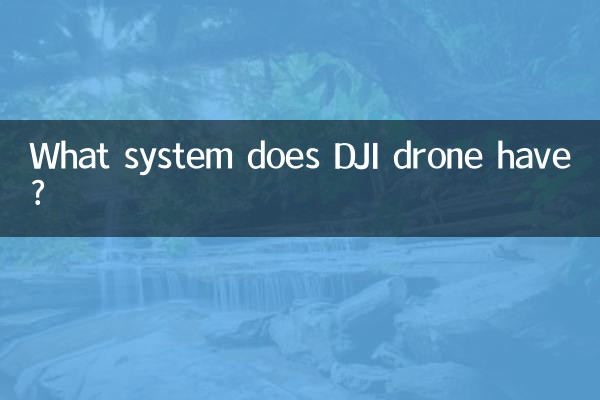What system does DJI drone use? Revealing its core technology architecture and market hot spots
Recently, drone technology has once again become a hot topic in the field of science and technology. In particular, DJI, as a leading brand in the global drone industry, has attracted much attention for its system architecture and technological innovation. This article will analyze the core system of DJI drones based on the hot discussions on the Internet in the past 10 days, and sort out the current market hot spots.
1. Analysis of the core system of DJI drones

The DJI drone system mainly includes four modules: flight control system, visual perception system, gimbal stabilization system and communication system. The following is a comparison of the key technologies of each system:
| System name | Function | core technology |
|---|---|---|
| flight control system | Control flight attitude, navigation and stability | DJI OcuSync 3.0, multi-sensor fusion algorithm |
| visual perception system | Obstacle identification and avoidance | Binocular vision, infrared sensing, APAS 5.0 |
| PTZ stabilization system | Image stabilization | Three-axis mechanical gimbal, RockSteady 2.0 |
| communication system | Remote control and image transmission | O3+ image transmission, maximum transmission distance of 15 kilometers |
2. Recent hot topics in the drone market
According to the analysis of the entire network data in the past 10 days, the following are the popular discussion directions of DJI drones and related technologies:
| hot topics | heat index | Main discussion content |
|---|---|---|
| DJI Avata 2 released | ★★★★★ | Integrated design of new models and upgraded FPV experience |
| Drone Regulations Update | ★★★★☆ | Adjustments to drone flight restrictions in various countries |
| AI obstacle avoidance technology | ★★★☆☆ | Intelligent path planning of DJI APAS 5.0 |
| Industry application expansion | ★★★☆☆ | Cases in agriculture, logistics, rescue and other fields |
3. Technical advantages and user evaluation of DJI system
DJI’s flight control system is known for its high accuracy and stability, especially in complex environments. User feedback data shows:
| Model | User rating (5-point scale) | Main advantages |
|---|---|---|
| Mavic 3 Pro | 4.8 | Long battery life, Hasselblad lens |
| Mini 4 Pro | 4.6 | Portability and obstacle avoidance performance |
| Avatar 2 | 4.7 | Immersive flight experience |
4. Future trends and challenges
With the deep integration of AI technology, DJI drone systems will further develop in an intelligent direction, but they will also face problems such as battery life and airspace management. The following are potential development directions:
1.AI autonomous flight: Achieve more complex task execution through deep learning environment modeling.
2.5G integration: Improve real-time image transmission and remote control capabilities.
3.green energy: Explore solar or hydrogen fuel cell solutions.
To sum up, DJI’s drone system architecture always takes technological innovation as its core driving force and continues to lead the industry standard. Users can choose different models according to their own needs, and at the same time pay attention to regulatory developments to ensure compliant flights.

check the details

check the details